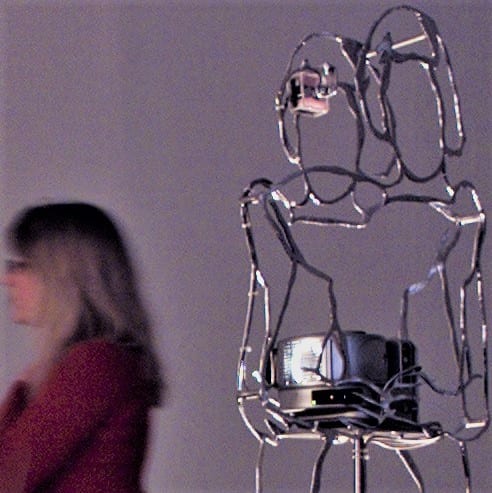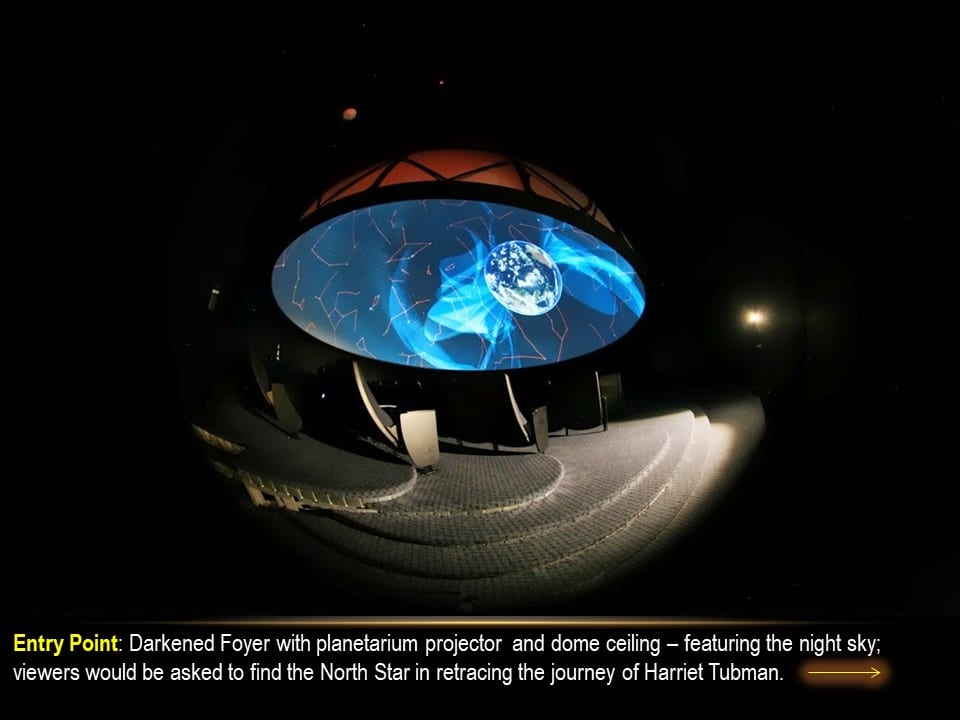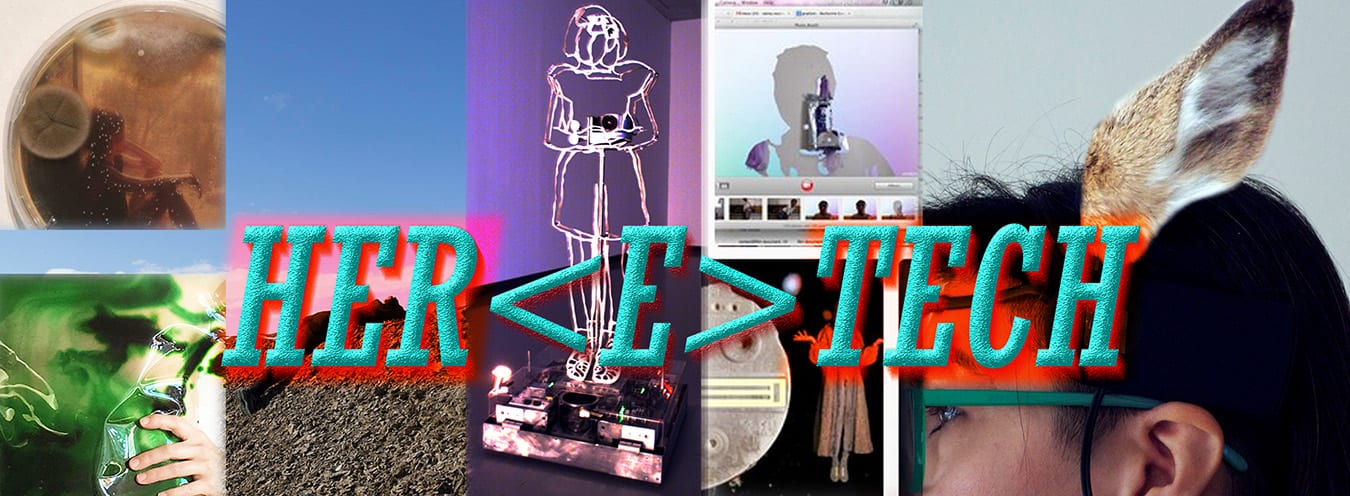GUEST EDITOR INTRODUCTION
By Susan Leibovitz Steinman
Magazine Founder/WEAD Co Founder
This special issue of WEAD MAGAZINE brings together the work of female identified artists and scholars working with emerging technologies. It follows work showcased in WEAD’s first online exhibition (early 2019), feminist tEChnOart.
When the Editorial Committee elected this issue’s genre, I knew that I lacked sufficient knowledge of emerging technologies to produce or edit it. But standing in our midst for more than ten years was one person born to the subject. So, for an herstoric first, I am delighted to introduce WEAD’s friend and globally respected expert-in-the-field, ISSUE 10 Guest Editor, Dr. Praba Pilar.
Activist performance artist, author, and teacher, Praba has deep ties to WEAD. A past Board Member and avid supporter, she has published essays here, and coproduced the online exhibition, feminist tECnOart.
Describing herself as ‘a diasporic Colombian artist and scholar disrupting the contemporary cult of the Techno-Logic,’ she works on decolonizing initiatives in community. She creates live art, performances, digital and electronic works, participatory workshops, experimental lectures, and publications. Her projects have traveled globally and received numerous awards; they include the NO!!!BOT, Enigma Symbiotica, BOT I, the Church of Nano Bio Info Cogno, the Cyborg Soap Opera, and the Nano Sutra of Mathturbation.
She holds a PhD in Performance from the University of California at Davis. Her most recent essays were published in the journals MAI: Feminism & Visual Culture, ROAR Magazine, Scholar & Feminist Online, Lateral Journal of the Cultural Studies Association, and Women Eco Artists Dialogue. She is presently Co-Director of the Hindsight Institute, and Director of the slow tech MAKER SPACE at Pro Arts Gallery & Commons in Oakland CA.
ISSUE 10: HER<e>tech
INTRODUCTION
by Praba Pilar

CARNEVALE (detail), Reva Stone, 2002. Photo credit: Ernest Mayer. From REVA STONE INTERVIEW
Thirty-five years have passed since Donna Haraway’s Cyborg Manifesto was published in the Socialist Review. Controversial even before it was published, her essay generated explosive interest within and far beyond the socialist, and feminist science and technology communities. Over subsequent decades, critical differences have arisen over many of Haraway’s claims in this essay. Feminist critics have pointed to problems with Haraway’s concept of the cyborg, her use of dense language, her cultural appropriation of Indigenous understandings of the coyote, and her superficial treatment of racism and disability. What remains clear is that Haraway was urgently calling on eco-feminists to sharpen their focus on emerging technologies, as scientific and technological convergence (the movement from cell to gene, from atom to electron, from the molecular to the nanometer) were further transforming the organic biosphere into a technosphere.
The technosphere encompasses all human-created technologies found on and beyond our planet, including urban, agricultural and marine forms, satellites, and other objects in space. The depth of the material impact of the human species on Earth and the material prevalence of technological society is difficult for most of us to grasp. A scientific team led by geologists at the University of Leicester exploring the scale and diversity of the technosphere published their preliminary calculations in 2016. They estimated that the current mass of the technosphere is approximately 30 trillion tonnes, five orders of magnitude larger than the biomass of all humans. (1) As reported in another journal, this means that, at this moment, for every pound of human flesh, a million pounds of human stuff exists. (2) The study also found that technofossil diversity may already exceed all biological diversity that has existed throughout Earth’s history.
The artists and scholars featured in Issue 10: HER<e>TECH contribute to shifting understandings of technology from <either/or> positionings to <this/and> possibilities. Born into a world already profoundly reshaped by human activity, they do not seek purity in the toxicity. Rather, they work from where they find themselves. Numerous through lines can be found in their projects, particularly in relationship to the materiality of bodies – of waterways, microbiomes, spores, animals and humans – and in the relations between species.

DEER EAR PROTOTYPE by Lissette Olivares from PROMETHEAN COEVOLUTION essay.
The issue begins with the work of Winnipeg-based featured artist Reva Stone, interviewed by Jennifer Smith. Stone began her work with emerging technologies in the early 1990s, driven by an insatiable curiosity about how technology impacts the ways in which we live in the world. In 2015, her groundbreaking work was awarded the Canada Council’s Governor General’s Award for Visual and Media Art. Turning to biotechnology and toxic algae blooms, in Cyanovisions Hawaii/Oakland based artist Tiare Ribeaux shatters binary positioning on the emergent ecologies of the sixth extinction. Ribeaux asks us to be here now with the inescapable and move through these mutations. French born Guyanese/Danish new media artist Tabita Rezaire, currently based in Cayenne in French Guyana, challenges online electronic colonialism through decolonial technologies. Rezaire’s work shows that the underwater routes of submarine optic cables used for the Internet are laid over colonial trade routes, revealing how information and communication technologies remain imbricated in colonial violence in this and other ways. Through her/their many practices in Sin Kabeza Productions & SK Symbiotic, Chilean/ Colombian diasporic artist Lissette Olivares renegotiates multispecies relations. In collaboration with the Chilean yogi Cheto Castellano, they develop technologies that transform cohabitation with the critters around and inside them. Danish artist Tina Mariane Krogh Madsen’s performances intervene in outdated nature/culture splits between the human body and the machine. In her work, she claims and inhabits her body as a technological interface. Spanish artist Paz Tornero can often be found experimenting in laboratories as part of her work with students and her own art practice. With Ioni, Tornero traces the ephemeral nature of her presence on a biosphere that is in constant flux, erasing what it creates. Sharing her long term project on Harriet Tubman, African American scholar Janell Hobson, in an interview by Caro Novella, clarifies the technoscientific practices underlying Tubman’s work on the underground railroad. Bulgarian performance artist Boryana Rossa provides a new reading of Eastern Bloc politics of emancipation, which have largely been overlooked by Western feminists.

HARRIET TUBMAN EXHIBIT PROPOSAL, Janell Hobson. From JANELL HOBSON INTERVIEW
Throughout her work, Haraway contested the generally accepted assumption that science is objective. She asked readers to be critically conscious both of the ways in which the embedded biases of the European Enlightenment infected science, its knowledge systems, and its canonical works and of the consequent exclusion of other knowledges that might challenge those biases. It seems paradoxical that, internationally, the Swedish climate change activist Greta Thunberg is now both celebrated and reviled for demanding that politicians listen to scientists. Both Haraway and Thunberg focus on shared material reality, and ask publics to understand that the helpful conveniences that have been introduced since the industrial revolution (from consumer plastic to cars to planes to computers to cell phones) now consume land, waterways, and airways with gruesome death.
The rational concerns about climate change, ecological breakdown, and the collapse of industrial modernity raised today demand accountability and reorientation, neither of which seem forthcoming from the corporate technoscientific sector. Simultaneously, the technoscientific world (and, within that, the technoart world) are saturated with brutish misogyny. As the artist Dewey-Hagborg recently commented, ‘As women in art and tech we are consistently under-recognized, under-funded, and written out of history.'(3) She and others jumpstarted the #KissMyArs campaign, successfully challenging the large Ars Electronica Festival to address sexism. Other groups working to create change include the queer transfeminist hacker collective HORS: Hackers of Resistance and the cyberfeminist collective Deep Lab.
The artists who have contributed to this issue ask us not only to think but also to BE differently in relation to the power structures that prevail in laboratories, and in scientific and technology development, by attending to where the biological Earth and the techno-political World are at. They have created a critical and generative space in today’s globalized, networked, post-truth society of fake news, fake scandal, fake politicians, and fake life. Against the terrifying backdrop of the sixth extinction, they do not offer a futurity of false hope. Instead, they offer wonder. They reveal the wondrous possibilities of a renewed awareness of what is fleeting, of what can happen between species, and of how, though flawed, humans have sacrificed and fought for dignity amidst grotesque violence.
END NOTES
(1) Scale and diversity of the physical technosphere: A geological perspective. J. Zalasiewicz, M. Williams, C. N. Waters, A. D. Barnosky, J. Palmesino, A.-S. Ronnskog, M. Edgeworth, C. Neal, A. Cearreta, E. C. Ellis, J. Grinevald, P. Haff, J. A. Ivar do Sul, C. Jeandel, R. Leinfelder, J. R. McNeill, E. Odada, N. Oreskes, S. J. Price, A. Revkin, W. Steffen, C. Summerhayes, D. Vidas, S. Wing, A. P. Wolfe. The Anthropocene Review, 2016; DOI: 1177/2053019616677743
(2) Weight of the human world is heavy on scientists’ minds. Sarah DeWeerdt. Anthropocene DAILY SCIENCE. Dec 6, 2016. http://www.anthropocenemagazine.org/2016/12/weight-of-the-human-world-is-heavy-on-scientists-minds/
(3) Why women are asking a major art and technology festival to #KissMyArs. Heather Dewey-Hagborg, Addie Wagenknecht, Camilla Mørk Røstvik, Kathy High. The Guardian. September 12, 2016. https://www.theguardian.com/science/the-h-word/2016/sep/12/ars-electronica-festival-gender

